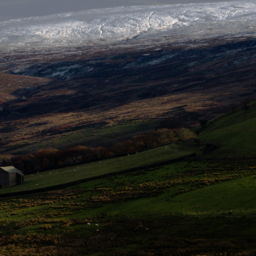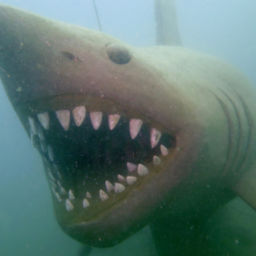Every year divers spend tons of money jetting to exotic, tropical dive destinations. Many of us never stop to consider more temperate places or those that may be closer to home, such as the U.K. Although some may scoff at the idea of immersing themselves in the North Atlantic Ocean, Irish or North Seas, England is fast becoming Europe’s new No. 1 dive destination thanks to thousands of years of maritime history and an abundance of marine life of all shapes and sizes. The United Kingdom features over 10,000 miles (16,000 km) of coastline, and each area offers different ecosystems, flora and fauna.
Water temperatures peak in August, at times reaching highs of 63 F (17 C), which allows hearty divers to comfortably wear 7 mm wetsuits. In the winter, temperatures drop as low as 45 F (7 C) and drysuits become essential. Here are a few of our picks for top dive experiences in England.
Cornwall and Devon: blue sharks
With a whopping 41 species, there are more sharks in English waters than in many world-renowned ‘shark’ locations around the world. Sleek and magnificent blue sharks arrive in the nutrient-rich, temperate waters off the southern county of Cornwall in search of prey after months of pelagic migration in the Atlantic.
Ten to 20 miles offshore, dive charters bring shark enthusiasts to areas where the crew will begin to entice the sharks with chum. In past years, operators recorded a 95 percent success rate, and have found that snorkeling is better for this experience than diving, as the bubbles may startle the sharks.
Optimal months for blues are between July and October, as conditions are usually calm with sunny skies and light winds. Visibility in Cornwall is usually far better than other areas around the U.K., and can range from 25 to 98 feet (8 to 30 m).
Lucky days will include not only blue sharks, but also potential sighting of Risso’s, bottlenose and common dolphins, often passing in pods on the journey offshore. Very lucky snorkelers might also spot mola mola or bluefin tuna.
Cornwall: basking sharks
While Scotland’s’ Isles of Mull and Skye are renowned for their basking-shark sightings, England’s Cornish Peninsula is also a good spot to see basking sharks. Moreover, visibility here can be far superior to any other waters where basking sharks roam. Between May and September, snorkelers can see the second- largest fish in the ocean close to shore, at times only 30 feet (10 m) from the beaches. Observers may spot more than 30 gigantic dorsal fins in small bays, watching as the sharks consume the plankton that blooms in the southwest currents.
Northumberland and Devon: grey seals
Pristine sand beaches and ancient castles cover the landscape on England’s eastern border with Scotland. Yet it is the barren group of small islands one to four miles off the coastline that hold Northumberland’s greatest allure. Grey seals live here annually in the shallow waters that surround the islands, finding shelter in the kelp forests and food in the nutrient-rich waters of the North Sea. Operating out of the small town of Seahouses, operators take divers year-round to encounter not only the seals, but also the many wrecks that litter the depths. Conger eels, lobsters and cod are all inhabit the darker recesses of the sunken crafts.





